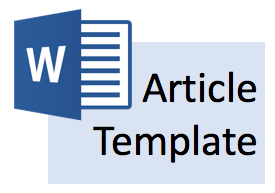THE DIFFERENCES OF LEARNING READINESS AND AUDIO VISUAL MEDIA INFLUENCES ON ECONOMIC LEARNING OUTCOMES OF THE STUDENT IN X GRADE OF SMA NEGERI 3 SURAKARTA AND SMA AL ISLAM 1 SURAKARTA IN THE ACADEMIC YEAR 2016/2017
Abstract
The research aims to know: (1) partial influence of learning readiness and audio visual media on the learning outcomes of the students in X grade of SMA Negeri 3 Surakarta and SMA Al Islam 1 Surakarta, (2) simultan influence of learning readiness and audio visual media on the learning outcomes of the students in X grade of SMA Negeri 3 Surakarta and SMA Al Islam 1 Surakarta (3) the difference of influence of learning readiness and audio visual media on economic learning outcomes of the student in X grade of SMA Negeri 3 Surakarta and SMA Al Islam 1 Surakarta. The population is all students of X grade who get economic subjects in SMA Negeri 3 Surakarta. The total of the students are 351 students with 78 students as a sample and SMA Al Islam 1 Surakarta with 177 students choose 64 students as a sample. The instrument to collect data on this research is a questionnaire and data analysis device is SmartPLS Version 2.0 M3.
Based on the effective contribution partial influence of learning readiness to learning outcomes in SMA Negeri 3 Surakarta with value 33,70% is higher than SMA Al Islam 1 Surakarta with value 22,47%. Meanwhile the influence of audio visual media on learning outcomes in SMA Al Islam 1 Surakarta with value 9,63% is higher than SMA Negeri 3 Surakarta with value 8,99%. The simultaneous effect of learning readiness and audio visual media on the learning outcomes of the student in SMA Negeri 3 Surakarta was 42,7% compared to SMA Al Islam 1 Surakarta with value 32,1%. Therefore, there are the differences of influence in both partially and simultaneously the influence of the learning readiness and audio visual media on economic learning outcomes of the students in X grade of SMA Negeri 3 Surakarta and SMA Al Islam 1 Surakarta.
Full Text:
PDFReferences
Akram, S., Sufiana, & Malik, K. (2012). Use of audio visual aids for effective teaching of biology at secondary schools level. Journal of Leadership Management, 50 (2012), 10597-10605. Diperoleh dari http://www.el-ixirpublishers.com/articles/1351336051_50-20(2012)%2010597-10605.pdf
Benjamin, B., & Orodho, J., A. (2014). Teaching and Learning Resource Availability and Teachers’ Effective Classroom Management and Content Delivery in Secondary Schools in Huye District, Rwanda. Journal of Education and Practice, 5 (9), 111-122. Diperoleh dari http://www.iis-te.org/Journals/index.php/JEP/article/-view/11873.
Hussein, A., A. (2015). Penelitian Bisnis Manajemen Menggunakan Partial Least Squares (PLS) dengan smartPLS 3.0. diperoleh dari https://-www.scribd.com/document/324815815/Mo-dul-PLS-SmartPLS.
Hung, M., L., et al. (2010). Learner Readiness for Online Learning: Scale development and Student perceptions. Journal of Computers and Education, 55 (2010), 1080-1090. Diperoleh dari http://www.sciencedirect.com/science/article/pii/S0360131510001260.
Irham, M., & Wiyani, N., A. (2013). Psikologi Pendidikan: Teori dan Aplikasi dalam Proses Pembelajaran. Yogyakarta: Ar-Ruzz Media. Khodijah, N. 2014). Psikologi Pendidikan. Jakarta: Rajawali Pers.
Kemdikbud. (2016). Sekolah Kita: Data Verifikasi Tahun 2016. Diperoleh pada 27 Februari 2017 pukul 19:14:51, dari sekolah.data.kemdik-bud.go.id.
Litzinger, TA., Wise, JC., Lee, SH.(2005) Self-directed Learning Readiness Among Undergraduate Engineering Students. Journal of Engineering Education, 215-221. Diperolah dari http://findarticles.com/p/articles/mi_q3886/is_200504/ai_n13636319/pg10.
Mardapi, D. (2003). Kurikulum 2004 SMA: Pedoman Khusus Pengembangan Silabus dan Penilaian Mata Pelajaran Ekonomi. Direktorat Pendidikan Menengah Umum, Direktorat Jenderal Pendidikan Menengah Dasar dan Menengah, Departemen Pendidikan Nasional.
Mulyasa. (2007). Standar Kompetensi dan Sertifikasi Guru. Bandung: PT Remaja Rosdakarya. _______. (2014). Pengembangan dan Implementasi Kurikulum 2013. Bandung: PT Remaja Rosdakarya.
Munadi, Y. (2013). Media Pembelajaran: Sebuah Pendekatan Baru. Jakarta: Referensi.
Nasution. (2015). Berbagai Pendekatan dalam Proses Belajar Mengajar. Jakarta: PT Bumi Aksara. Permendikbud Nomor 81A Tahun 2013 tentang Implementasi Kurikulum, Pedoman Umum Pembelajaran sebagai standar penilaian Kurikulum 2013. Diperoleh dari https://luk.st-aff.ugm.ac.id/atur/bsnp/Permendikbud81A2013ImplementasiK13Lengkap.pdf.
Pingge, H., D., & Wangid, M., N. (2016). Factor’s Affecting Student Learning Outcomes Elementary School Student’s in District Tambolaka. Jurnal Pendidikan Sekolah Dasar, 2 (1), 146-167. Diperoleh dari ht-tp://journal.uad.ac.id/index.php/JPSD/article/down-load/4947/pdf_12.
Priyatno, D. (2010). Teknik Mudah dan Cepat Melakukan Analisis Data Penelitian dengan SPSS. Yogyakarta: Gava Media.
Rasul, S., Bukhsh, Q., & Batool S. (2011). A Study to analyze the effectiveness of audio visual aids in teaching learning process at university level. Social and Behavioral Sciences, 28 (2011), 78-81. Diperoleh dari http://www.scien-cedirect.com/science/article/pii/S1877042-811024554.
Sarjono, H., & Julianita, W. (2011). SPSS vs LISREL: Sebuah Pengantar, Aplikasi untuk Riset. Jakarta: Salemba Empat. Sudjana, N. (2013). Penilaian Hasil Proses Belajar Mengajar. Bandung: PT Remaja Rosdakarya.
Slameto. (2010). Belajar & Faktor-Faktor yang Mempengaruhi. Jakarta: Rineka Cipta.
Susanto, A. (2013). Teori Belajar dan Pembelajaran di Sekolah Dasar. Jakarta: Kencana.
Tsabitah, D., & Wahyudin, A. (2016). Peran Kesiapan Belajar dalam Memediasi Pengaruh Kreativitas Siswa dan Fasilitas Belajar terhadap Hasil Belajar Akuntansi. Economic Education Analysis Journal, 5 (1), 72-84. Diperoleh dari http://jour-nal.unnes.ac.id/artikel_sj-u/eeaj/9987.
Undang-Undang Republik Indonesia Nomor 20 Tahun 2003 tentang Sistem Pendidikan Nasional. Diperoleh dari https://kemenag.go.id/file/dokumen/UU2003.pdf.
Wijanto, S., H. (2008). Structural Equation Modelling dengan LISREL 8.8: Konsep dan Tutorial. Yogyakarta: Graha Ilmu.
Zain, A., & Djamarah, S., B. (1997). Strategi Belajar Mengajar. Jakarta: Rineka Cipta.
Refbacks
- There are currently no refbacks.


